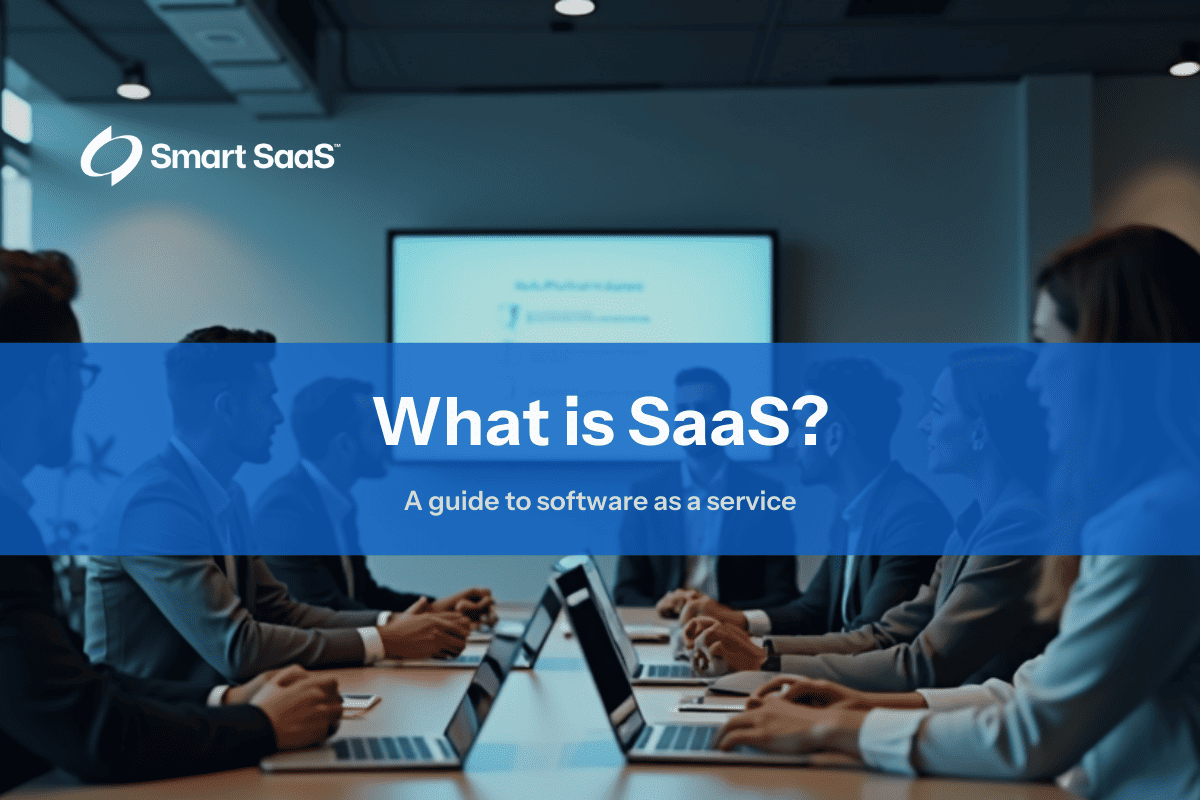

Sunday, February 2, 2025
Kevin Anderson
Software as a Service (SaaS) is a transformative software distribution model that has revolutionized how businesses and individuals access, use, and manage software. Unlike traditional on‑premise solutions, SaaS operates in the cloud computing ecosystem, providing a fully managed software experience without the need for local installation or maintenance.
So, what is SaaS? At its core, SaaS is a model where applications are hosted online by a provider and accessed by users via the internet. This ensures seamless updates, enhanced scalability, and cost‑effective pricing options. Whether you’re a small business owner or a global enterprise, SaaS solutions cater to diverse needs with flexibility and efficiency.
In this guide, we’ll delve into what SaaS means, explore its applications, and uncover how it drives innovation across industries.

SaaS stands for Software as a Service. It is one of three primary cloud computing models, alongside Infrastructure as a Service (IaaS) and Platform as a Service (PaaS). While IaaS provides infrastructure components like servers and PaaS offers development frameworks, SaaS delivers complete, user‑ready applications..
Common examples of SaaS include Google Workspace (Gmail, Docs, Drive), Microsoft 365, Salesforce, and Zoom. By leveraging SaaS, companies can enhance productivity, reduce IT overhead, and focus on their core operations while benefiting from continuous improvements and feature updates provided by the service provider.


SaaS software works by leveraging cloud computing to provide on‑demand access to applications. Users connect to the software via web browsers, eliminating the need for downloads, installations, or complex setups. SaaS providers host and manage the software, ensuring updates, security, and scalability.
For instance, Microsoft 365 and Slack are SaaS products that streamline communication and productivity, offering robust tools accessible from anywhere.
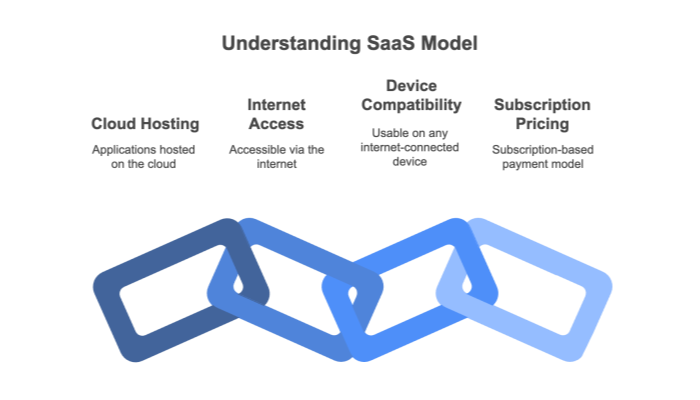

A SaaS company develops, hosts, and delivers cloud-based software, eliminating the need for local installation and maintenance. These companies serve both B2B (businesses) and B2C (consumers), offering tools for productivity, automation, and communication.
However, not all SaaS is created equal. Many platforms lock users into rigid contracts, upsell essential features, and introduce hidden costs—turning what should be a flexible solution into a financial and operational burden. Smart businesses now demand transparent pricing, real control over their data, and scalable, customer-first solutions rather than falling into the “Dumb SaaS” trap. Choosing SaaS wisely means prioritizing providers that focus on flexibility, security, and true user empowerment over profit-maximizing schemes.
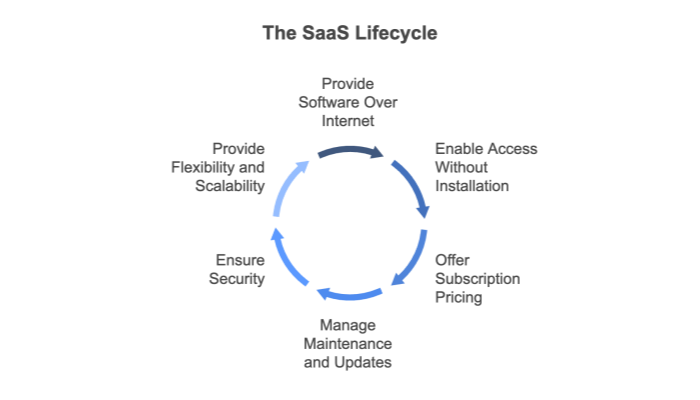

SaaS platforms come with unique characteristics that distinguish them from traditional software models. Some of the defining features include:


Vertical SaaS refers to applications tailored to specific industries, such as healthcare, real estate, or manufacturing. Unlike general‑purpose tools like Microsoft 365, vertical SaaS solutions address niche challenges with customized functionalities.
Examples of Vertical SaaS:
By focusing on specific markets, vertical SaaS providers deliver unparalleled value, making them indispensable for specialized industries.
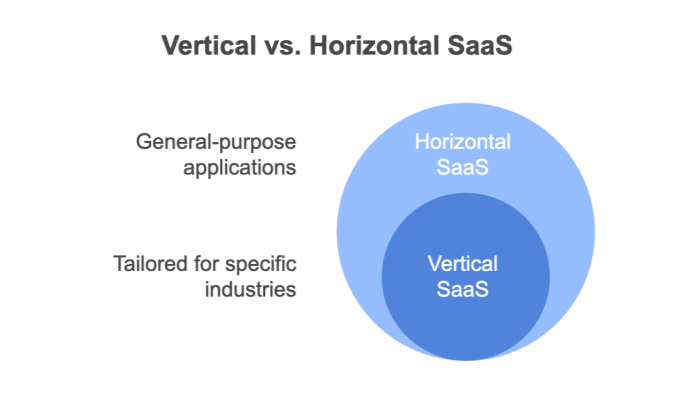

SaaS marketing is all about selling cloud-based software the smart way—focusing on value, not just features. Unlike traditional product marketing, it’s not about one-time sales but long-term customer retention in a subscription-driven model.
Effective SaaS marketing strategies include:
A prime example is HubSpot Academy, which turns free educational content into a powerful lead-generation tool—helping customers learn while subtly nudging them toward adoption. Smart SaaS marketing builds trust, reduces churn, and ensures users see real value before they even subscribe.
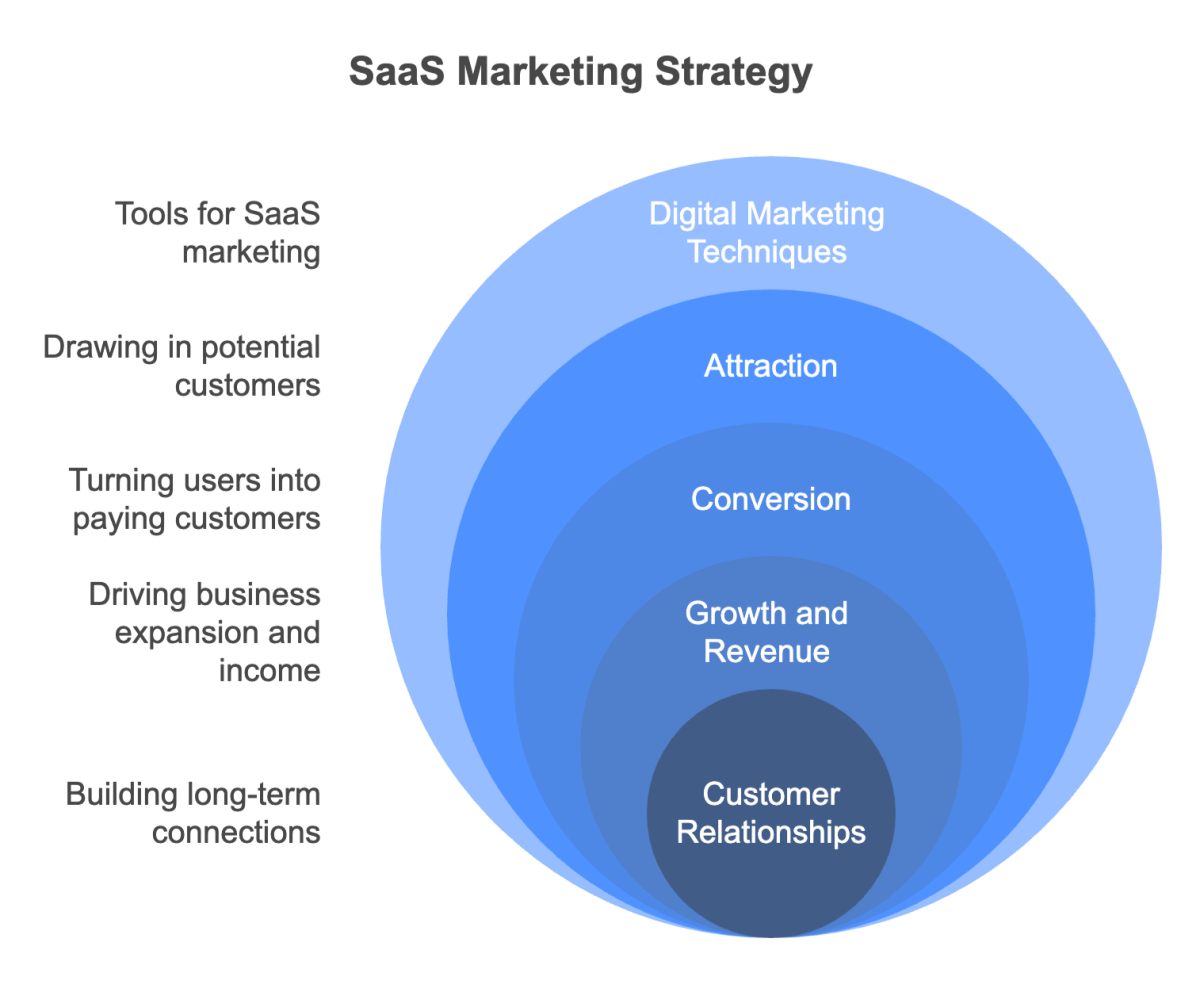

The rapid rise of SaaS isn’t just hype—it’s driven by real, tangible benefits that make it the go-to software model for businesses and individuals alike. Here’s why SaaS wins over traditional software:
With SaaS, businesses ditch IT headaches, cut costs, and stay agile—but only if they choose smart, transparent providers over the “Dumb SaaS” trap of hidden fees and vendor lock-in.
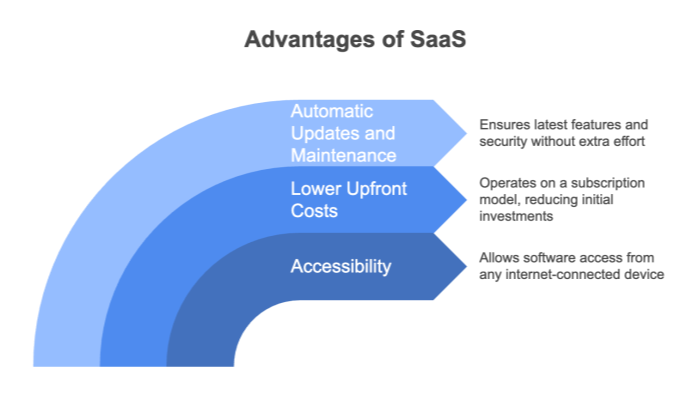

SaaS comes with undeniable perks, but it’s not all smooth sailing. Businesses need to stay sharp and watch out for common pitfalls:
Smart businesses don’t get SaaS’d—they demand transparency, review contracts carefully, and enforce strict SaaS management practices (regular audits, security checks, and clear SLAs) to avoid getting locked into a bad deal.


Software as a Service (SaaS) is a core component of cloud computing, where applications are hosted and managed by a service provider and delivered over the internet, eliminating the need for local installations or extensive IT infrastructure. SaaS enables businesses and individuals to access software on a subscription basis, reducing costs, improving scalability, and ensuring seamless updates.
Unlike traditional on-premise software, SaaS applications run on cloud infrastructure, meaning users only need a web browser and an internet connection to operate them. This model allows for automatic updates, enhanced security, and real-time collaboration, making it an attractive solution for businesses of all sizes.
SaaS is part of the broader cloud computing ecosystem, which also includes:
SaaS, IaaS, and PaaS work together to form a fully integrated cloud computing stack, where IaaS provides the infrastructure, PaaS offers the development environment, and SaaS delivers end-user applications. This ecosystem enables businesses to streamline operations, reduce IT complexity, enhance security, and accelerate software deployment, making cloud computing an essential foundation for modern digital transformation.


SaaS spans multiple industries, covering everything from basic productivity tools to enterprise-grade platforms that drive business efficiency. Its flexibility and accessibility make it a go-to model for companies looking to scale without heavy IT investments. Some of the most recognized SaaS platforms include:
Each of these platforms showcases the core strengths of SaaS: scalability, accessibility, and operational efficiency. However, not all SaaS is created equal. While some providers deliver genuine value, others lure users in with low initial costs, only to introduce hidden fees, limited customizability, and restrictive contracts.
The Smart SaaS Approach: Instead of falling into the “Dumb SaaS” trap, businesses must choose flexible, transparent, and customer-centric SaaS solutions that offer:
SaaS should empower businesses, not restrict them. The key is to choose wisely, read the fine print, and demand accountability from providers to avoid being locked into a system that serves the vendor more than the customer.


SaaS architecture is the backbone of cloud-based software delivery, ensuring applications are accessible, scalable, and secure. Unlike traditional software that runs on local machines, SaaS operates on cloud infrastructure, where providers manage hosting, updates, and security while users access the software via the internet.
At its core, SaaS follows a multi-tenant or single-tenant model:
SaaS relies on API integrations, automated updates, and elastic scalability to adapt to business needs in real time. However, not all SaaS platforms are built equally—poorly designed SaaS can lead to security gaps, performance issues, and vendor lock-in. Smart businesses prioritize transparent, flexible, and secure SaaS solutions to maximize benefits while avoiding the pitfalls of restrictive contracts and hidden costs.
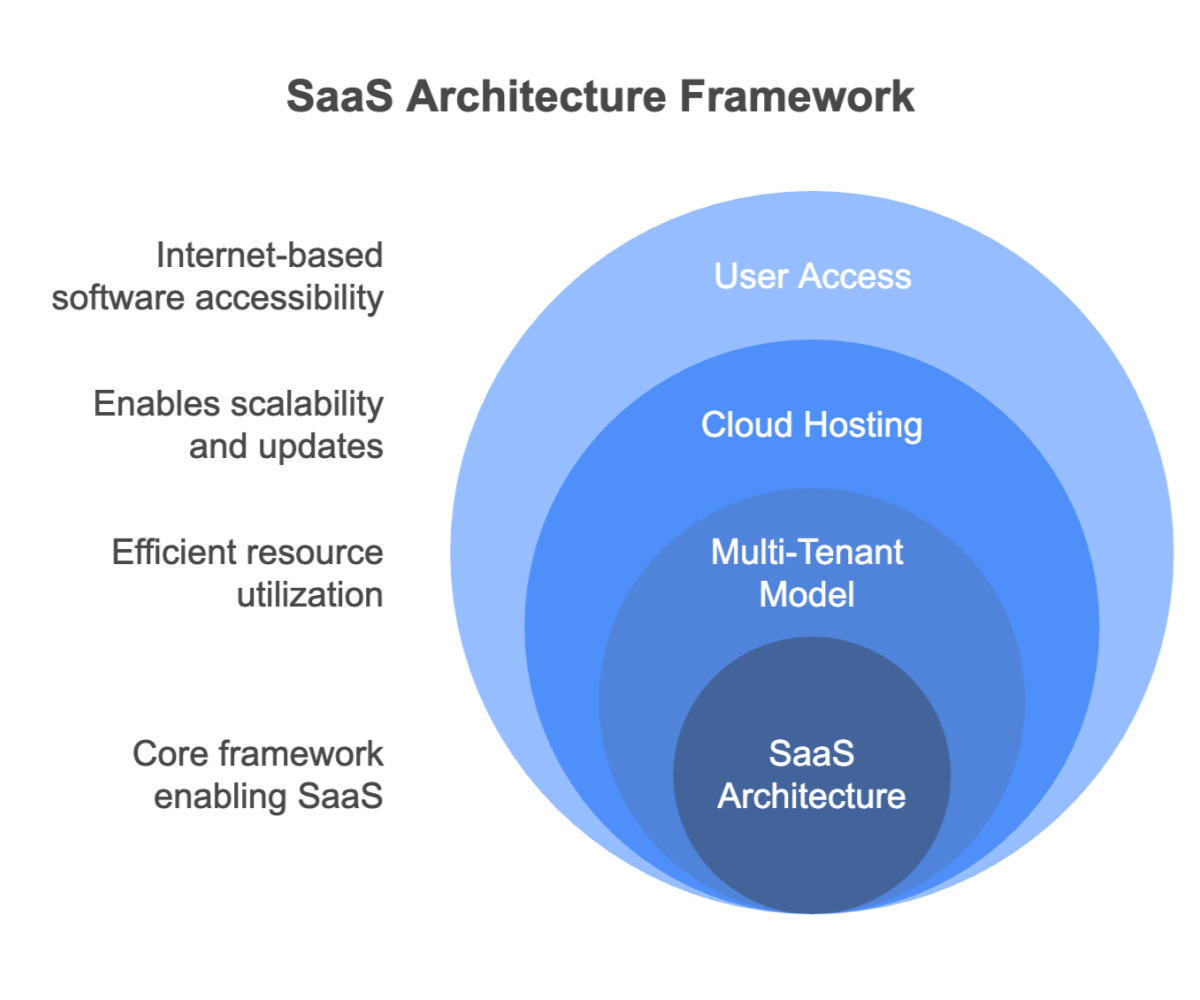
SaaS architecture is the backbone of the software‑as‑a‑service model, determining how applications are hosted, managed, and accessed. It ensures seamless service delivery, scalability, and security by leveraging cloud computing.
In multi‑tenant architecture, a single instance of the application serves multiple customers (or tenants). Each tenant shares the same infrastructure, software version, and configuration, while their data remains securely isolated.
Advantages of Multi‑Tenant SaaS:
For example, Slack operates as a multi‑tenant SaaS platform, allowing millions of users to collaborate in real time while maintaining data segregation for each workspace.
In a single‑tenant architecture, each customer has their own dedicated instance of the software. This model offers greater control and customization, but it comes at a higher cost due to increased resource requirements.
Advantages of Single‑Tenant SaaS:
Single‑tenant models are common in industries with stringent security requirements, such as healthcare SaaS solutions that manage sensitive patient data.
SaaS leverages cloud computing infrastructure to deliver its services. Here’s how it works:
For example, Google Workspace integrates effortlessly with other Google services and third‑party applications through its APIs, enhancing productivity and collaboration.
Below is a quick comparison between multi‑tenant and single‑tenant SaaS architectures:
| Aspect | Multi‑Tenant Architecture | Single‑Tenant Architecture |
|---|---|---|
| Cost | Lower due to shared resources | Higher due to dedicated resources |
| Customization | Limited | Extensive |
| Security | Strong but shared environment | Enhanced with isolated instances |
| Scalability | Effortless scaling across tenants | Requires more resources for scaling |
| Updates | Centralized for all customers | Managed individually for each tenant |
APIs are a vital component of SaaS, enabling businesses to integrate their existing tools with SaaS applications. For example, a company using HubSpot for marketing automation can integrate it with their CRM software to streamline lead management. APIs also allow developers to customize functionalities, extending the platform’s capabilities without altering its core.
SaaS platforms often need to work alongside existing software or databases in a business environment. Integration enables seamless workflows and data sharing across applications. Common integration scenarios include:

SaaS has transformed how businesses access and use software, offering scalability, cost savings, and ease of deployment. With automatic updates, remote accessibility, and flexible pricing, it enables organizations to focus on growth rather than IT maintenance. However, not all SaaS solutions are created equal—hidden fees, vendor lock-in, and security risks can turn convenience into a costly burden. To truly benefit from SaaS, businesses must carefully evaluate providers, prioritize data control, pricing transparency, and security measures, and ensure the platform aligns with their long-term needs.
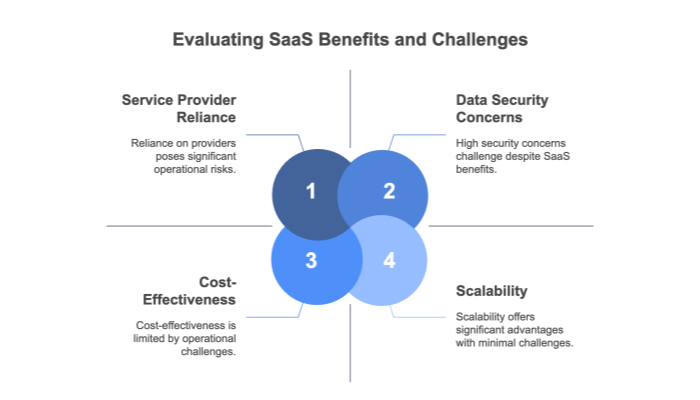

SaaS solutions are transforming industries by streamlining operations, enhancing customer engagement, and driving innovation. Here are some common use cases:
For example, imagine a growing retail startup leveraging:
By integrating these SaaS solutions, the startup operates efficiently and scales without significant infrastructure investments.
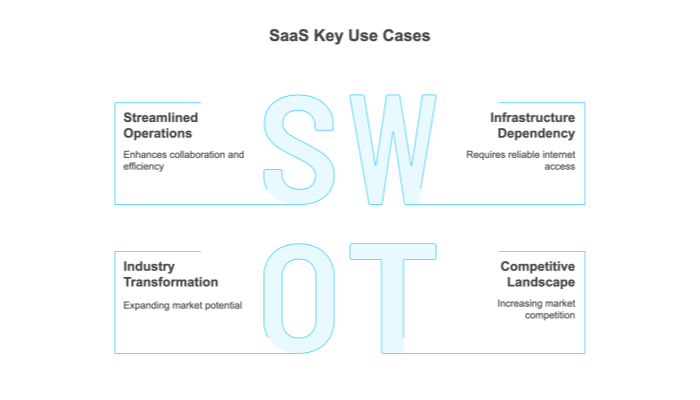

SaaS pricing is designed for flexibility, with models like subscription-based, pay-as-you-go, freemium, and tiered plans. While this allows businesses to scale costs, hidden fees and forced upgrades can quickly erode value. Smart SaaS buyers prioritize transparent pricing, clear ROI, and flexibility to avoid vendor lock-in and unnecessary expenses. Emerging trends focus on AI-driven pricing, custom plans, and bundled services, ensuring businesses get more control over their SaaS investments.
SaaS platforms use flexible pricing structures to meet diverse business needs. Common pricing models include:
When selecting a pricing model, consider your budget, scalability, feature requirements, and usage patterns. Avoid pitfalls such as hidden costs, vendor lock‑in, and overprovisioning.
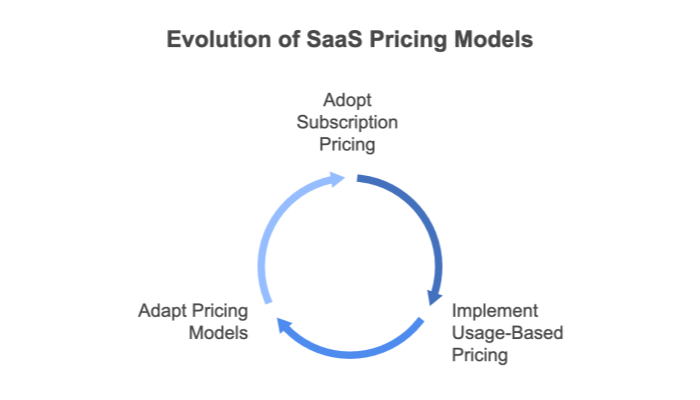

SaaS is evolving with AI-driven automation, industry-specific solutions (Vertical SaaS), and enhanced security models like zero-trust architecture. No-code/low-code platforms are making customization easier, while embedded analytics and hyper-personalization improve user experience. As businesses demand more control, transparency, and scalability, the focus is shifting toward flexible pricing, seamless integrations, and sustainable cloud solutions, shaping the next generation of SaaS.
The SaaS industry continues to transform rapidly, driven by technological advancements and evolving business needs. With global adoption projected to reach 85% of all business applications by 2025, the focus is on delivering smarter, more tailored, and sustainable solutions.
Artificial intelligence is revolutionizing the SaaS landscape by enabling automation, personalization, and advanced analytics. For example, AI‑powered platforms like Zendesk AI enhance customer service by predicting user needs and offering proactive solutions.
Vertical SaaS is designed for niche industries and addresses specific challenges with customized functionalities. In healthcare, platforms like Veeva Systems provide tools for managing clinical trials and regulatory submissions, ensuring compliance and optimized workflows.
SaaS providers are investing in customer‑centric strategies—offering onboarding programs, real‑time support, and usage analytics—to improve retention and customer satisfaction. Salesforce Customer Success, for instance, integrates personalized training to help users maximize ROI.
White‑label SaaS enables businesses to rebrand and resell existing software under their own name, allowing rapid market entry without significant development costs.
With growing SaaS adoption, providers are enhancing security by implementing zero‑trust models, robust encryption, and compliance with standards like SOC 2 and ISO 27001.
Environmental, social, and governance (ESG) initiatives are becoming more important. Providers are reducing energy consumption and designing sustainable solutions. For example, Google Cloud operates carbon‑neutral data centers.
Micro SaaS products are small‑scale, niche solutions that offer focused functionality at low cost. They are ideal for addressing very specific needs within a market.
AI allows SaaS platforms to offer personalized dashboards and proactive support by analyzing user behavior. Netflix, for example, uses AI to recommend content tailored to each user.
SaaS platforms are increasingly integrating analytics directly into their products, enabling users to monitor performance and make data‑driven decisions. Tableau Embedded Analytics is one such example.
The rise of remote work has made collaboration tools essential. Future SaaS platforms will further enhance virtual workspaces and real‑time communication. Slack Huddles, which offer instant audio rooms, exemplify this trend.
Metrics such as Net Revenue Retention (NRR) and Annual Recurring Revenue (ARR) are now critical for measuring growth and customer success in SaaS.


SaaS has redefined software delivery, offering scalability, cost-efficiency, and accessibility—but not all SaaS solutions are created equal. To maximize value and avoid common pitfalls, businesses must take a strategic approach.
The SaaS industry is not just a technology solution—it’s a business enabler. By adopting the right SaaS tools and staying informed about emerging trends, organizations can improve operational efficiency, enhance customer experiences, and drive long‑term growth.
Are you ready to transform your business with SaaS? Learn how to adopt cloud‑based solutions effectively and avoid hidden fees, vendor lock‑in, and other pitfalls. Our comprehensive eBook, Don’t Get SaaS’d, offers actionable strategies, real‑world case studies, and expert insights to help you make informed decisions.